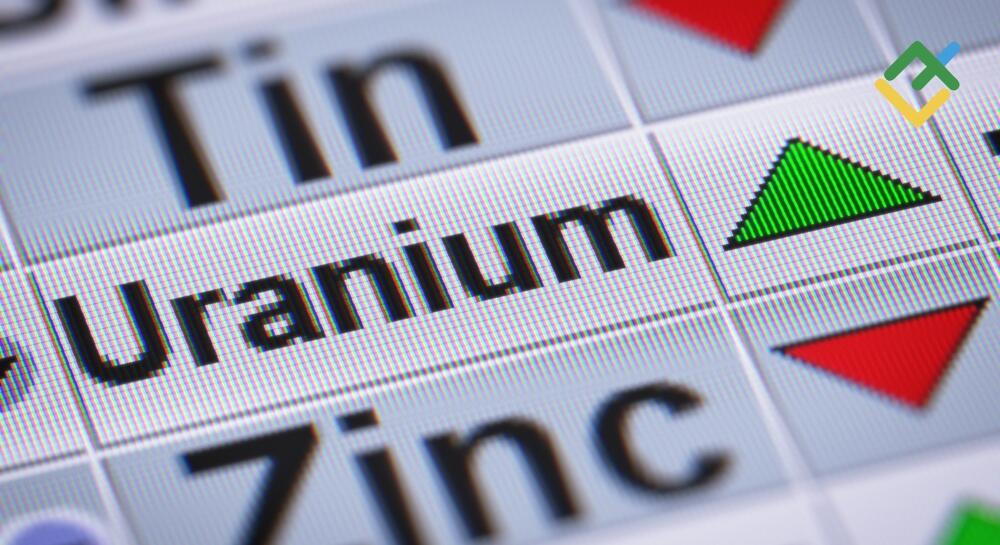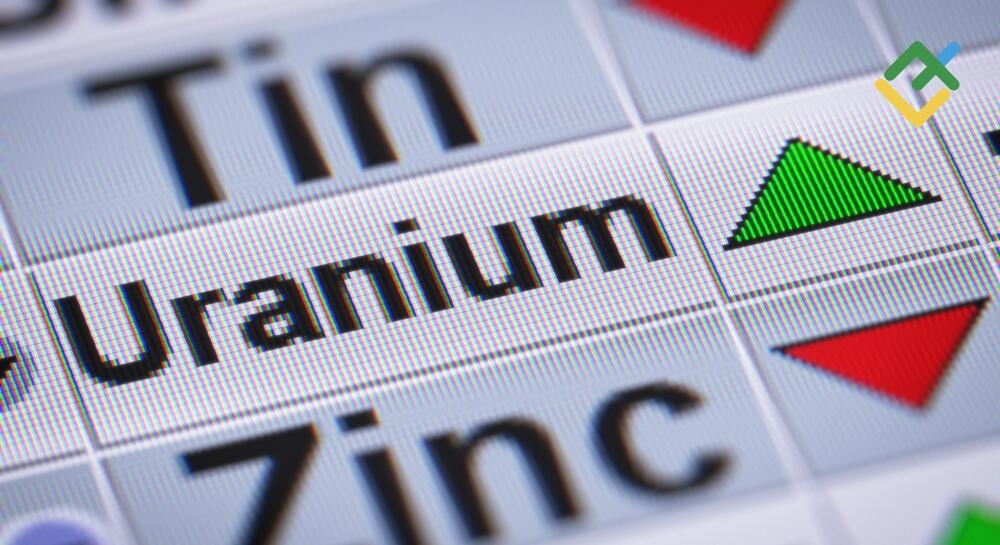10 Best Uranium Stocks to Buy Now (2025) — Complete Investment Guide

Over the past five years, top uranium stocks have more than tripled in price, delivering an annual return of around 60%, making them a recurring theme in stock market news alongside other uranium stocks. For comparison, the S&P 500 index has yielded about 94% over the same period. Although returns on uranium stocks are lower than those of US indices and the top 10 companies by market cap, they can still help diversify a long-term investment portfolio.
This overview covers how to invest in uranium assets, highlights 1-year and 5-year returns, and names the most promising uranium stocks.
The article covers the following subjects:
Major Takeaways
- Australia, Kazakhstan, and Canada possess the biggest uranium reserves. Kazakhstan accounts for the largest share of global production (43%).
- The number of nuclear reactors worldwide is increasing. 65 reactors will soon be added to the 440 currently in operation, with another 95 under construction.
- As of 11.07.25, over the past five years, the price of uranium futures has risen by 140% and stands at $71.75 per pound, which is far from its historical high.
- Demand for uranium ore and concentrate exceeds supply by over 20%, which highlights the sector’s ability to benefit from higher prices and growing concerns about energy security. As a result, uranium prices are expected to keep rising.
- Centrus Energy Corp. (LEU) posted the biggest 5-year return of +1,654.69%, while Oklo Inc. (OKLO) topped the 1-year chart with a 592.29% gain.
Why Invest in the Best Uranium Stocks Now?
Historically, uranium has been less popular with investors than other commodities like gold or silver. It cannot be easily bought or stored, and unlike safe-haven metals, its use is mostly limited to nuclear fuel.
Some facts about uranium:
-
The World Nuclear Association estimates that if uranium sells for $130/kg, about 5.925 million tonnes can be economically mined. At $260/kg, recoverable resources increase to 7.935 million tonnes. As of July 11, 2025, uranium trades at around $156/kg ($71.75 per pound). Uranium reserves by country:
|
Country |
Reserves (%) |
|
Australia |
28 |
|
Kazakhstan |
14 |
|
Canada |
10 |
|
Namibia |
8 |
|
Russia |
8 |
|
Niger |
6 |
|
South Africa |
5 |
|
China |
5 |
- Kazakhstan accounts for approximately 43% of global refined uranium production. Kazakhstan, Canada, Namibia, and Australia represent approximately 70% of the global output.
- Operating nuclear reactors requires about 80k tonnes of uranium concentrate (U₃O₈), which is equivalent to 67.5k tonnes of pure uranium per year.
- Sprott Physical Uranium Trust (Canada) is the world’s largest physical uranium fund. It holds approximately 28.8k tonnes (63.6 million pounds) of U₃O₈ uranium concentrate.
- The largest importer of uranium ore and concentrates is the United States. However, the country has almost no domestic production, with 99% of raw materials being imported from other countries.
Some investors see opportunity in uranium, while others remain deeply skeptical. The Chernobyl disaster may seem like a distant memory, but the Fukushima accident in 2011 revived an old question: can nuclear reactions ever be fully controlled? Even in highly developed countries such as Japan, accidents with catastrophic consequences can still occur.
Coal and petroleum products damage the environment. Some countries have turned to alternative energy while scaling back their nuclear programs. Germany, in particular, has chosen to phase out nuclear power entirely.
Those in favour of uranium and uranium stocks typically cite the following arguments:
- According to the World Nuclear Association (WNA), as of early 2025, 65 new nuclear reactors are under construction worldwide, another 95 are being designed, and 440 are in operation.
- Alternative energy sources cannot completely replace petroleum products and nuclear energy. Therefore, nuclear energy will continue to progress.
- As global demand for uranium remains robust, particularly driven by the military-industrial complex, the supply continues to be constrained. Annual global demand for uranium is estimated at approximately 200 million pounds (90.7k tonnes), while production is around 150–160 million pounds (72.5k tonnes). This disparity presents a significant growth opportunity for uranium, especially for uranium companies that focus on energy-efficient technologies.
Rising demand for uranium commodities is expected to boost the companies that mine uranium, develop new types of nuclear reactors, hold government contracts, and serve the utilities sector.
10 Best Uranium Stocks List: Top Uranium Companies to Buy Now
The best uranium stocks are typically companies that run a full cycle: mining uranium ore, processing it, and supplying nuclear power plants and other end users. Their profitability depends less on commodity prices and more on proprietary technologies that secure government contracts. Participation in state-backed projects remains one of the main drivers of uranium stock growth.
Top 10 uranium stocks:
|
Company |
1-Year Return |
5-Year Return |
|
|
1 |
Oklo Inc. (OKLO) |
+592.29% |
+434.35% |
|
2 |
Centrus Energy Corp. (LEU) |
+336.96% |
+1,654.69% |
|
3 |
Nuscale Power Corp. (SMR) |
+160.61% |
+248.08% |
|
4 |
Cameco Corporation (CCJ) |
+50.73% |
+576.96% |
|
5 |
BWX Technologies, Inc. (BWXT) |
+46.22% |
+164.66% |
|
6 |
Kazatomprom (KAP) |
+14.75 |
+36.64 |
|
7 |
Energy Fuels Inc. (UUUU) |
+2.96% |
+277.14% |
|
8 |
Uranium Energy Corp. (UEC) |
-3.09% |
+345.1% |
|
9 |
NexGen Energy Ltd. (NXE) |
-7.67% |
+332.68% |
|
10 |
Denison Mines Corp. (DNN) |
-17.59% |
+345.0% |
The list of the top 10 uranium stocks can change over time, depending on how companies perform in the long run. For the uranium industry, long-term growth remains the primary focus.
Oklo Inc (OKLO)
Country: USA.
Exchange: NYSE.
5-Year Return: +434.35%, 1-Year Return: +592.29% (as of 07.07.2025).
Oklo Inc. specializes in developing compact Aurora reactors designed to run on spent nuclear fuel. This technology reduces the cost of clean energy and accelerates its deployment. These microreactors operate autonomously, relying on traditional power grids, which is ideal for remote locations.
Since its public offering in April 2023, Oklo’s stock has surged on the back of the Department of Defense pilot program and the US Department of Energy licensing progress. The company now holds site permits at three locations, with its first demonstration site already approved for land use in the US.
Centrus Energy Corp (LEU)
Country: USA.
Exchange: NYSE.
5-Year Return: +1,654.69%, 1-Year Return: +336.96% (as of 07.07.2025).
The company focuses on nuclear fuel and related services for the nuclear power industry. Its core activities include:
- Developing and supplying centrifuge technology for commercial and strategic uranium enrichment.
- Providing enriched uranium fuel to commercial and state-run nuclear power plants.
- Fabricating nuclear fuel technologies under contracts with the US Department of Energy.
Competitive advantage of the company: Centrus Energy is the only supplier of enriched uranium, which is essential for national security and the operation of the latest reactor types. It is the only US company licensed to produce HALEU (a type of enriched uranium).
Nuscale Power Corp (SMR)
Country: USA.
Exchange: NYSE.
5-Year Return: +248.08%, 1-Year Return: +160.61% (as of 07.07.2025).
NuScale Power Corporation develops advanced small modular reactors (SMRs), delivering safe, scalable, and reliable carbon-free energy. Its flagship NuScale Power Module is a compact, pressurized water reactor that can be adapted to the requirements of various industrial and energy projects.
NuScale went public in 2021. Its share price rose on international deals, such as a memorandum to develop nuclear capacity in Ghana. Progress with the US Nuclear Regulatory Commission (NRC) added further momentum.
Cameco Corporation (CCJ)
Country: Canada.
Exchange: NYSE.
5-Year Return: +576.96%, 1-Year Return: +50.73% (as of 07.07.2025).
Cameco Corporation is the world’s second-largest uranium producer, with mining operations in the US, Canada, and Kazakhstan. The company accounts for about 12% of global uranium production. Its activities involve uranium exploration, mining, processing, and the sale of uranium concentrate. Moreover, the company supplies fuel for nuclear power plants. It is a key contributor to the Global X Uranium ETF (URA) with a share of about 23%.
BWX Technologies, Inc. (BWXT)
Country: USA.
Exchange: NYSE.
5-Year Return: +164.66%, 1-Year Return: +46.22% (as of 07.07.2025).
BWX Technologies, Inc. designs, manufactures, and services nuclear reactor components and fuel. It is the primary supplier of fuel assemblies for US naval and research reactors. While most sales are in the US, the company also fulfills orders from abroad.
Kazatomprom (KAP)
Country: Kazakhstan.
Exchange: London Stock Exchange.
5-Year Return: +36.64%, 1-Year Return: +14.75% (as of 07.07.2025).
Kazatomprom is the world’s largest uranium producer, engaged in exploration, mining, processing, and export of uranium and nuclear fuel. The company controls 26 deposits grouped into 14 assets and accounts for around 23% of global uranium output. It supplies uranium concentrate to nuclear power plants under long-term contracts. Kazatomprom’s advantages include the world’s largest uranium reserves, low production costs, and government support. About 25% of its shares are freely traded on the Astana International Exchange and the London Stock Exchange, and the company pays dividends.
Energy Fuels Inc (UUUU)
Country: USA.
Exchange: NYSE.
5-Year Return: +277.14%, 1-Year Return: +2.96% (as of 07.07.2025).
Energy Fuels Inc. is a leading US uranium producer, also engaged in rare earth elements. The company’s key assets include uranium mines in Colorado, Utah, and Wyoming, as well as the White Mesa Mill in Utah, the only conventional uranium mill in the US. The company supplies uranium concentrate to nuclear power plants in the spot market and under long-term contracts.
Uranium Energy Corp (UEC)
Country: USA.
Exchange: NYSE.
5-Year Return: +345.1%, 1-Year Return: -3.09% (as of 07.07.2025).
Uranium Energy Corp. is a full-cycle uranium exploration, development, and mining company specializing in in situ recovery (ISR) for extracting uranium from sandstone deposits, with a focus on South Texas operations. This method involves injecting a leaching solution into the ground and recovering uranium-laden fluid through wells.
The company has processing facilities for producing uranium concentrate located in the US. It also conducts exploration projects in Canada’s Athabasca Basin and in Paraguay. Following the acquisition of UEX in 2022, UEC expanded its resource base and strengthened the long-term value of its portfolio. Besides, it has facilities in the US to process uranium into concentrate U₃O₈ (“yellowcake”). Its main customers include the US Department of Energy under the Strategic Uranium Reserve program, microreactor developers, and nuclear power plants. Moreover, the company experiments with artificial intelligence to improve efficiency and optimize how uranium held under contracts is allocated.
NexGen Energy Ltd (NXE)
Country: Canada.
Exchange: NYSE, Toronto Stock Exchange (Canada).
5-Year Return: +332.68%, 1-Year Return: -7.67% (as of 07.07.2025).
NexGen Energy Ltd. is a Canadian company focused on uranium exploration and development. Its flagship project is Rook I in the Athabasca Basin, which the company believes has the potential to become the largest and lowest-cost uranium mine in the world.
The company is building an underground uranium mine and its own processing plant to produce U₃O₈ concentrate (“yellowcake”) as part of a full-cycle operation. The first deliveries to nuclear clients are expected between 2029 and 2030. Its stock behaves like a venture-capital asset, showing paper gains through asset revaluation and secured long-term contracts.
Denison Mines Corp (DNN)
Country: Canada.
Exchange: NYSE, Toronto Stock Exchange (Canada).
5-Year Return: +345.0%, 1-Year Return: -17.59% (as of 07.07.2025).
Denison Mines Corp. is a Canadian uranium exploration, development, and production company. Its flagship Wheeler River project, comprised of the Phoenix and Gryphon deposits, is one of the largest undeveloped uranium projects in Saskatchewan’s Athabasca Basin. The company holds a 22.5% stake in the McClean Lake joint venture, which includes a major uranium mill that currently processes ore from Cigar Lake under a toll milling agreement. Denison also provides environmental reclamation services for former mining sites.
How to Invest in Uranium Stocks: Strategic Investment Guide
The uranium market is relatively small and closed, as investors tend to favor metals with broader applications, such as gold, silver, copper, or palladium. Trading is dominated by mining and processing companies on the supply side and utilities on the demand side. Most contracts are negotiated directly between these parties, rather than through exchanges.
Uranium is also traded on the spot market, but such contracts are few compared with direct deliveries. Futures contracts are typically limited to delivery periods of up to 12 months.
How to invest in uranium:
- Purchase uranium futures, for example, on the NYMEX commodities exchange, a division of CME Group.
- Buying stocks of uranium companies.
- Investing in ETFs that focus on uranium instruments. For instance, the Global X Uranium ETF (URA) invests in the shares of the world’s largest uranium companies. Over the past five years, the price of its securities has tripled.
The first option is best suited for professional investors. The second allows you to build a portfolio of individual uranium stocks, though it can be complicated since the shares trade on different exchanges. ETFs, by contrast, are the most convenient choice for long-term retail investors.
Uranium Market Outlook and Price Predictions for 2025
Uranium futures prices often move in cycles. In January 2024, they peaked at $114 per pound, the highest level in recent years, before retreating more than 35%.
Many analysts argue that uranium’s recent popularity is short-lived, citing the following factors:
- In recent years, nuclear energy has seen renewed interest, with more reactors scheduled to start operating over the next five years. With limited uranium supply, this trend is expected to push commodity prices higher.
- However, geopolitical conflicts are negatively affecting the growth of the uranium supply.
The uranium market is entering a new phase of shortages and rising prices. Analysts expect prices to climb above $100 per pound within the next 1–2 years, which would benefit uranium miners with full production cycles and government support. Conversely, intermediaries and end users in the energy sector may face higher costs as the price of the final product may surge.
Risks and Key Considerations for Uranium Stock Investments
When investing in uranium, one should consider the common risks associated with the stock market, as well as risks related to uranium mining:
- Stock market stagnation. The overall downturn can stem from many factors, from a pandemic to management decisions that spark panic and drive investors into safe-haven assets like gold or the Swiss franc.
- Geopolitical risks. Global uranium production is concentrated in a few countries: Canada, Kazakhstan, Australia, and Namibia. This factor makes supply vulnerable to political and regional disruptions. For instance, Namibia faces economic instability, while Australia contends with challenging climate conditions.
For example, Canada’s Global Atomic witnessed its uranium shares plunge 66% over the past year, even as its competitors enjoyed gains. Its Dasa uranium project in Niger was thrown into uncertainty after a military coup in mid-2023.
- Shifts in demand for uranium. The Fukushima accident in 2011 led many countries to suspend uranium-based nuclear power development in favor of alternative energy. This step led to a decline in demand for uranium commodities and, consequently, a drop in the price of uranium stocks.
- Operational and technical risks. Industrial accidents, supply disruptions, temporary production stoppages, and other reasons may lead to a fall in share prices.
- Environmental and social issues. The problem of nuclear waste disposal grows more pressing each year, and local communities near storage sites are often resistant. Potential conflicts and tighter environmental regulations could weigh on uranium prices.
- Nuclear technology is a narrow field where each company brings unique strengths. Some develop mini-reactors powered by spent fuel, others secure large government contracts, while a few control the world’s biggest uranium deposits. The main risks include contract defaults and disappointing tests of new equipment and technologies.
Conclusion
Uranium is considered a speculative investment. Since individual investors cannot buy physical uranium, the alternatives are uranium stocks or ETFs. Over the past five years, uranium stocks in the US, Canada, and Australia have delivered returns of more than 300%, roughly 60% annually. Although most companies have posted declines over the past year, analysts view this as a temporary trend. As a result, uranium is seen as a long-term investment, with a horizon of more than five years.
Uranium Stocks FAQs
The top three countries in terms of uranium production are Kazakhstan, Canada, and Namibia/Australia. These countries, along with Uzbekistan, ranked fifth, account for about two-thirds of global uranium production. The top three companies are Kazatomprom (Kazakhstan, 23%), Cameco Corporation (Canada, 12%), and Orano S.A. (France, 11%).
The content of this article reflects the author’s opinion and does not necessarily reflect the official position of LiteFinance broker. The material published on this page is provided for informational purposes only and should not be considered as the provision of investment advice for the purposes of Directive 2014/65/EU.
According to copyright law, this article is considered intellectual property, which includes a prohibition on copying and distributing it without consent.






